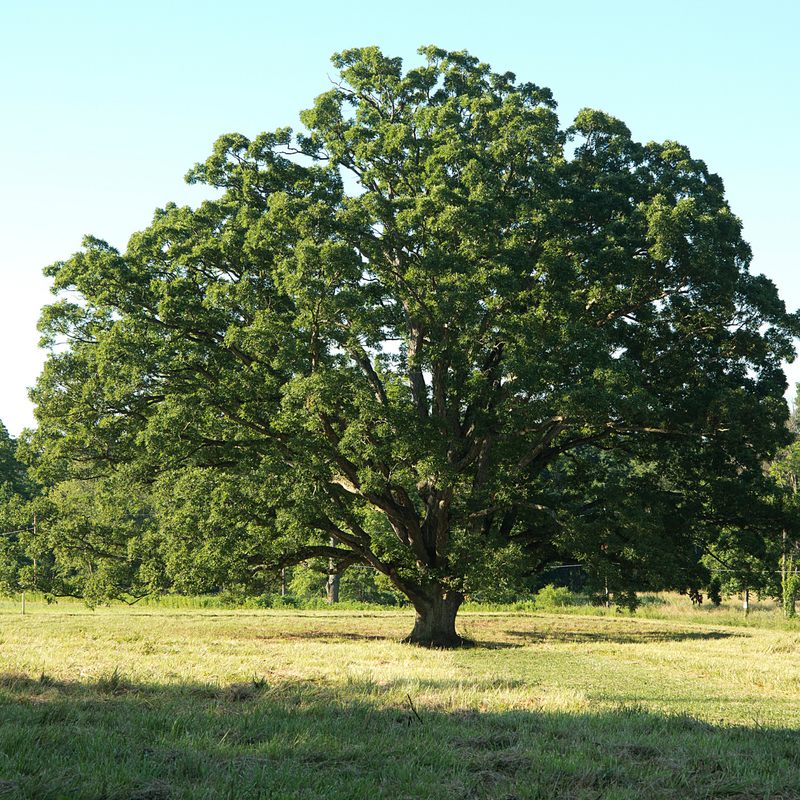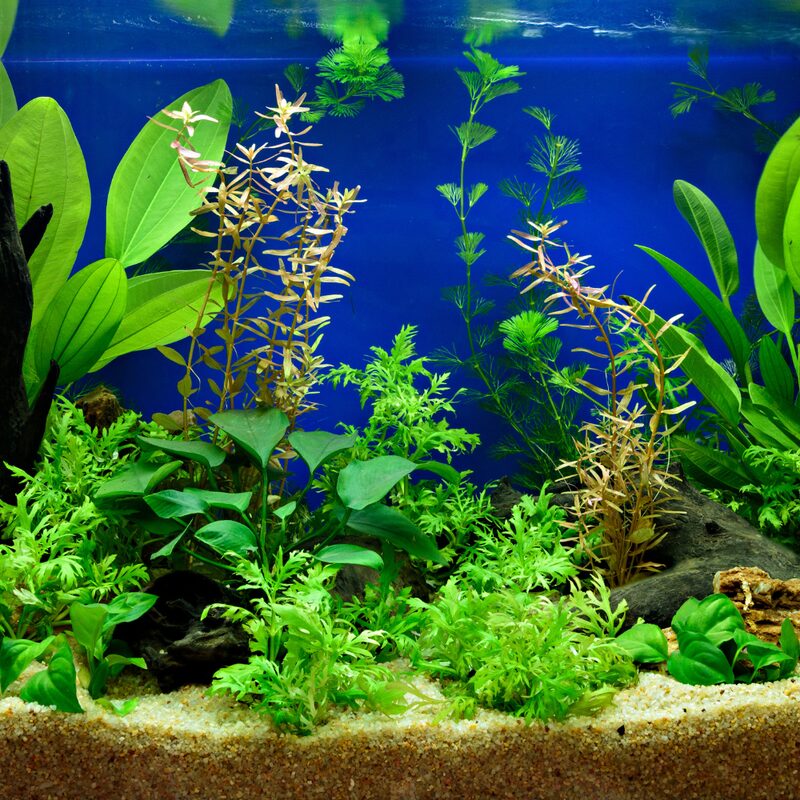Guide
Shampoo Ginger Plant Care: The Ultimate Guide
If you’re looking for a low-maintenance tropical plant that adds beauty to your garden and provides a natural hair care solution, look no further than shampoo ginger (Zingiber zerumbet). This incredible plant is known for its pinecone-shaped flowers that release a fragrant liquid, used traditionally as a natural shampoo and skin moisturizer.
Maybe you’re curious about how to grow shampoo ginger at home, or you’ve already got a plant but aren’t sure how to care for it properly. Perhaps you’ve heard about its natural hair care benefits and want to harvest its golden nectar for yourself.
Either way, I’ve got you covered! In this ultimate guide, I’ll walk you through everything you need to know, from planting and propagation to harvesting and troubleshooting.
What is Shampoo Ginger?
Shampoo ginger (Zingiber zerumbet), also known as pinecone ginger or awapuhi, is a stunning tropical plant that’s as useful as it is beautiful! Native to Southeast Asia and the Pacific Islands, this perennial thrives in warm, humid climates, making it a favorite for gardeners in tropical and subtropical regions. Its most eye-catching feature? Bright red, pinecone-shaped flower heads that produce a fragrant, natural juice—traditionally used as a shampoo and skin conditioner!
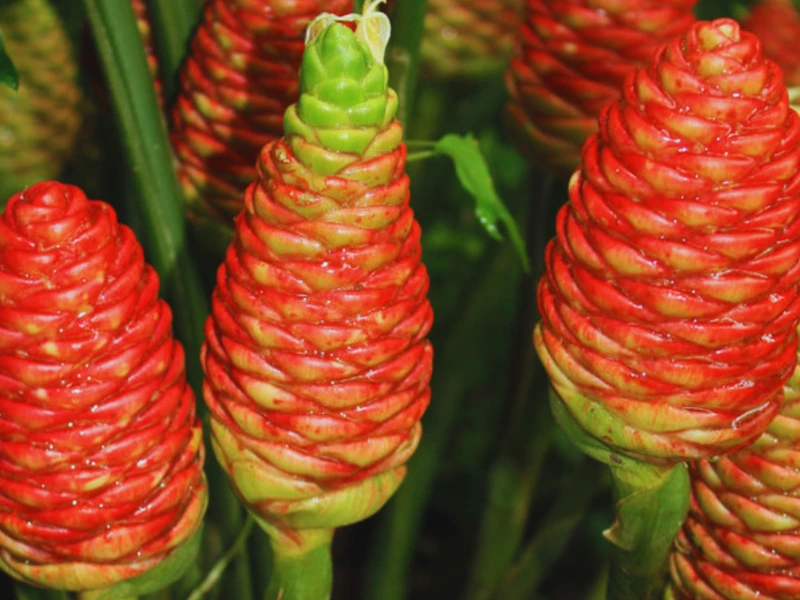
Key Features
- Scientific Name: Zingiber zerumbet
-
Mature Size: Grows 4-6 feet tall and spreads 2-3 feet wide, forming a lush, tropical clump.
-
Cold Tolerance: Thrives in USDA Zones 8-11 but goes dormant in cooler climates. In zones below 8, it needs to be brought indoors or heavily mulched to survive winter.
-
Ideal Planting Time: Best planted in spring, once temperatures are consistently warm and all risk of frost has passed.
-
Height: Typically grows 3 to 4 feet tall.
-
Leaves: Long, lance-shaped green leaves, similar to regular ginger.
-
Flowers: Pinecone-shaped blooms that start green and turn bright red when mature.
-
Fragrant Liquid: When squeezed, the red cones release a clear, slippery liquid, traditionally used as a natural shampoo.
-
Growth Rate: Moderate grower, with lush foliage appearing in early summer and flowers developing in late summer to early fall.
-
Growth Habit: Forms a clumping, upright structure with tall, arching stems and broad, tropical leaves. Perfect for containers, garden beds, or shaded borders where it adds a lush, exotic feel.
- Toxicity: Non-toxic to humans and pets.
Planting Shampoo Ginger
Choosing the Perfect Spot
Shampoo ginger grows best in partial shade or filtered sunlight, as too much direct sun can scorch its leaves. It thrives in warm temperatures between 65-85°F (18-30°C) and requires high humidity to flourish. If you live in a cooler climate, consider planting it in a container so you can move it indoors during the winter. This tropical plant cannot tolerate frost, so bring it inside when temperatures drop below 50°F (10°C) to keep it healthy year-round.
Prepping the Soil
For optimal growth, shampoo ginger prefers well-draining, loamy soil that is rich in organic matter. The ideal soil pH is slightly acidic to neutral, ranging from 5.5 to 6.5. Mixing in compost or mulch will improve soil fertility and moisture retention, helping the plant thrive. Avoid heavy clay soils, as they retain too much water and can cause root rot. If your garden has dense soil, amending it with sand and organic material will improve drainage and create the perfect growing conditions.
Planting Shampoo Ginger
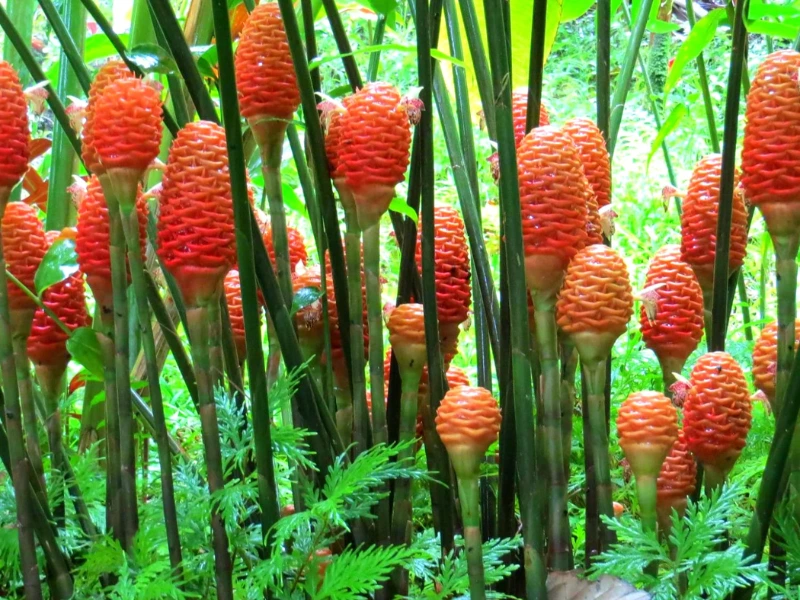
The best way to grow shampoo ginger is from rhizomes, which are underground stems similar to regular ginger.
Start by purchasing healthy rhizomes from a nursery or using fresh ones from an existing plant.
Soak them in water for 12-24 hours before planting to speed up sprouting.
Plant each rhizome 2-3 inches deep with the buds facing upward and water thoroughly after planting.
Space each plant 12-18 inches apart to allow for proper air circulation, which helps prevent disease and promotes healthy growth.
Growing in Containers
If you don’t have a tropical garden, shampoo ginger can thrive in containers. Choose a 12-16 inch wide pot with drainage holes to prevent waterlogging. Fill it with a well-draining potting mix enriched with compost to provide essential nutrients. Place the pot in a warm, shaded area, and water regularly to keep the soil moist but not soggy. When temperatures drop below 50°F (10°C), bring the plant indoors and place it near a bright window to keep it growing through the winter. With the right care, your potted shampoo ginger will flourish and provide you with its unique, natural shampoo straight from the flower cones!
Growing Shampoo Ginger
Shampoo ginger (Zingiber zerumbet) is a resilient and rewarding plant, but like any tropical beauty, it thrives best with the right care. From watering and fertilizing to winter protection and propagation, here’s how to keep your shampoo ginger happy and healthy.
Watering
Shampoo ginger loves consistently moist soil, but overwatering can lead to root rot. During warm months, water 2-3 times per week to keep the soil evenly damp. In winter, when the plant goes dormant, reduce watering significantly, allowing the soil to dry out slightly between waterings. If grown in a pot, ensure proper drainage to prevent excess moisture buildup.
Fertilizing
To support healthy growth, feed your shampoo ginger with a balanced fertilizer (10-10-10) every 4-6 weeks during its active growing season. For an organic approach, enrich the soil with compost or well-rotted manure, which provides essential nutrients and helps retain moisture. Avoid excessive fertilization, as too much nitrogen can lead to lush foliage at the expense of flowers.
Pruning and Pinching
Regular pruning keeps shampoo ginger looking neat and encourages new growth. Remove yellowing or dead leaves to improve air circulation and prevent disease. After the flower cones have been harvested, trim away spent blooms to direct the plant’s energy back into its rhizomes, ensuring a strong comeback next season.
Winter Care
In colder climates, shampoo ginger naturally dies back to the ground and enters dormancy during winter. If planted outdoors, apply a thick layer of mulch over the rhizomes to protect them from freezing temperatures. For potted plants, bring them indoors before the first frost and keep them in a warm space with indirect sunlight. Even though the foliage may wither, the plant will regrow in spring as long as the rhizomes remain healthy.
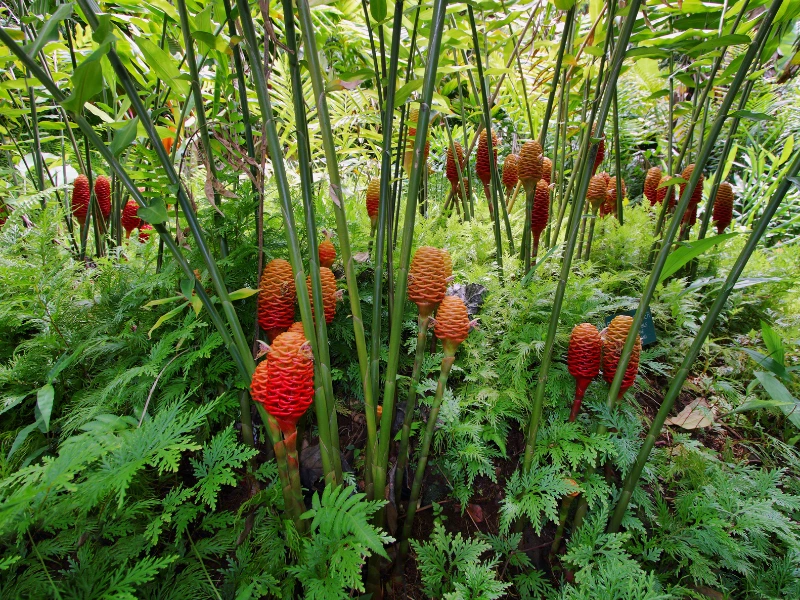
Potting and Repotting
If growing shampoo ginger in a container, repot it every 2-3 years to refresh the soil and prevent nutrient depletion. When the plant becomes root-bound, divide the rhizomes and repot them into separate containers. This keeps the plant vigorous and allows you to propagate new plants at the same time.
How to Propagate Shampoo Ginger
The easiest way to propagate shampoo ginger is through rhizome division, a simple method that ensures strong, healthy plants.
- In spring or early summer, carefully dig up the plant and separate the rhizomes.
- Cut them into sections, making sure each piece has at least one growth bud.
- Let the cut ends dry for about a day to prevent rot, then replant them in well-prepared soil. With warmth, moisture, and patience, new shoots will emerge, giving you even more beautiful shampoo ginger plants!
How to Get Shampoo Ginger to Bloom
When Does Shampoo Ginger Bloom?
Patience is key when waiting for shampoo ginger to bloom! Flowers typically appear in late summer or early fall, signaling that the plant has reached full maturity.
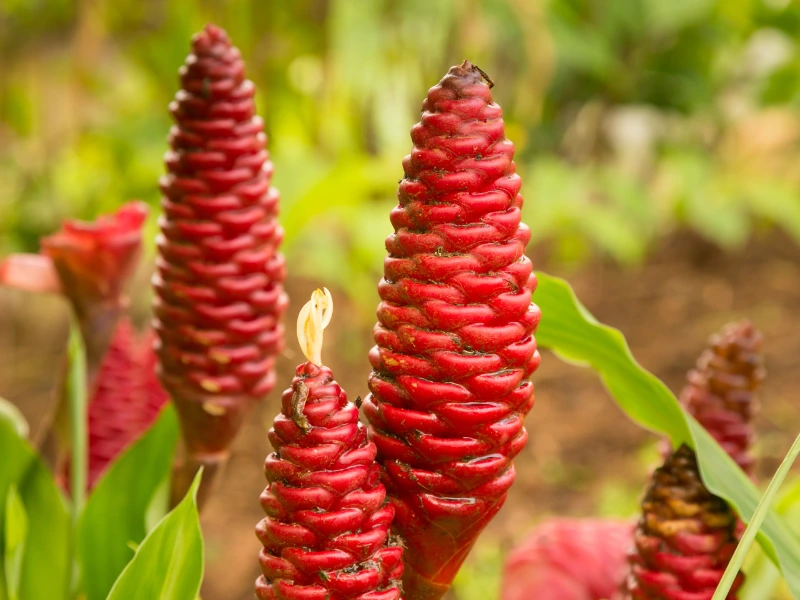
The bright red, cone-like blooms start out green and gradually turn red as they develop. Once fully mature, the cones will fill with a fragrant, liquid sap that can be gently squeezed out and used as a natural shampoo or skin conditioner.
How to Encourage Blooming
For the best chance at a stunning floral display, make sure your shampoo ginger is growing in warm temperatures and high humidity—it thrives in a tropical-like environment. Feeding your plant with a phosphorus-rich fertilizer (such as 5-10-10) every 4-6 weeks during the growing season will help stimulate flower production. Be careful not to over-prune, as shampoo ginger flowers develop on mature stalks. Cutting back too aggressively can delay or even prevent blooming for the season.
Harvesting and Storing Shampoo Ginger
When to Harvest
Shampoo ginger is ready for harvest when the cones turn bright red and feel plump with liquid. This usually happens in late summer to early fall, when the plant has reached full maturity. If you’re growing shampoo ginger for its natural shampoo, wait until the flower cones are fully developed before extracting the liquid.
How to Harvest
To collect the shampoo-like liquid, gently squeeze the red flower cones, allowing the fragrant juice to drip into a bowl. The liquid can be used immediately as a natural hair rinse or skin conditioner. If you’re harvesting rhizomes, carefully dig them up, shake off excess soil, and separate healthy sections for replanting or culinary use.
Storage Tip: If you have extra liquid, store it in an airtight container in the refrigerator for up to a week to maintain freshness. For longer storage, consider freezing it in ice cube trays.
Troubleshooting Common Problems
Even with the best care, shampoo ginger may face a few common issues. Here’s how to identify and fix them:
Common Issues
-
Leaves turning yellow? This could be due to overwatering, poor drainage, or a nutrient deficiency. Adjust watering and check soil quality to prevent root rot.
-
No flowers? Your plant may not be getting enough sunlight, nutrients, or could be over-pruned. Keep mature stalks intact and ensure the plant has warm, humid conditions to encourage blooming.
Pests and Diseases
-
Aphids & Spider Mites: These tiny pests can weaken your plant by sucking its sap. Treat infestations with neem oil or insecticidal soap.
-
Root Rot: Overwatering and poor drainage can cause rhizomes to rot. Make sure your soil drains well and avoid letting the plant sit in standing water.
-
Fungal Infections: If you notice mold or mildew on leaves, improve air circulation around the plant and use an organic fungicide if necessary.
FAQs About Shampoo Ginger
Can I grow shampoo ginger indoors?
Yes! Shampoo ginger can be grown indoors as long as it’s kept in a bright, warm location with high humidity and indirect sunlight. A bathroom with good light can be an ideal spot.
How long does shampoo ginger take to mature?
Shampoo ginger takes about 8-10 months to fully grow from a rhizome, but it may take 1-2 years before it starts flowering. Patience is key, but once established, it will bloom annually.
Is shampoo ginger safe for pets?
Yes, shampoo ginger is non-toxic to pets, making it a safe addition to your home or garden. However, it’s best to prevent pets from chewing the leaves, as too much plant material can cause mild stomach upset.
Does shampoo ginger die back in winter?
Yes, shampoo ginger naturally dies back and goes dormant in colder months, especially if grown outdoors in non-tropical climates. In spring, it will regrow from its rhizomes when temperatures warm up. If grown in a container, bring it indoors to protect it from frost.
Final Thoughts
Shampoo ginger is a fantastic plant for anyone looking to add a tropical touch to their garden while also enjoying its natural beauty benefits. With proper care, you can easily grow, harvest, and use this incredible plant for natural shampoo, skin care, and medicinal purposes.
If you’re thinking about adding shampoo ginger to your garden, now’s the perfect time to start! Have you grown shampoo ginger before? Share your experience in the comments below!
You may like:

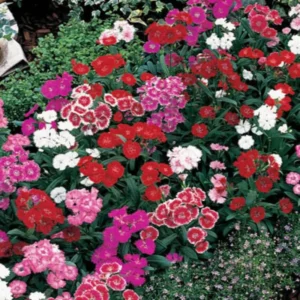 Set 10 Perennial Dianthus Mixed Plants Live, Set 10 Plants Dwarf Dianthus for Planting, No Pot
Set 10 Perennial Dianthus Mixed Plants Live, Set 10 Plants Dwarf Dianthus for Planting, No Pot 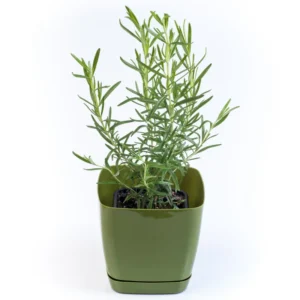 Tuscan Blue Rosemary Plants - 3 Live Bushes - 4-5 Inches - Garden Herbs
Tuscan Blue Rosemary Plants - 3 Live Bushes - 4-5 Inches - Garden Herbs 
